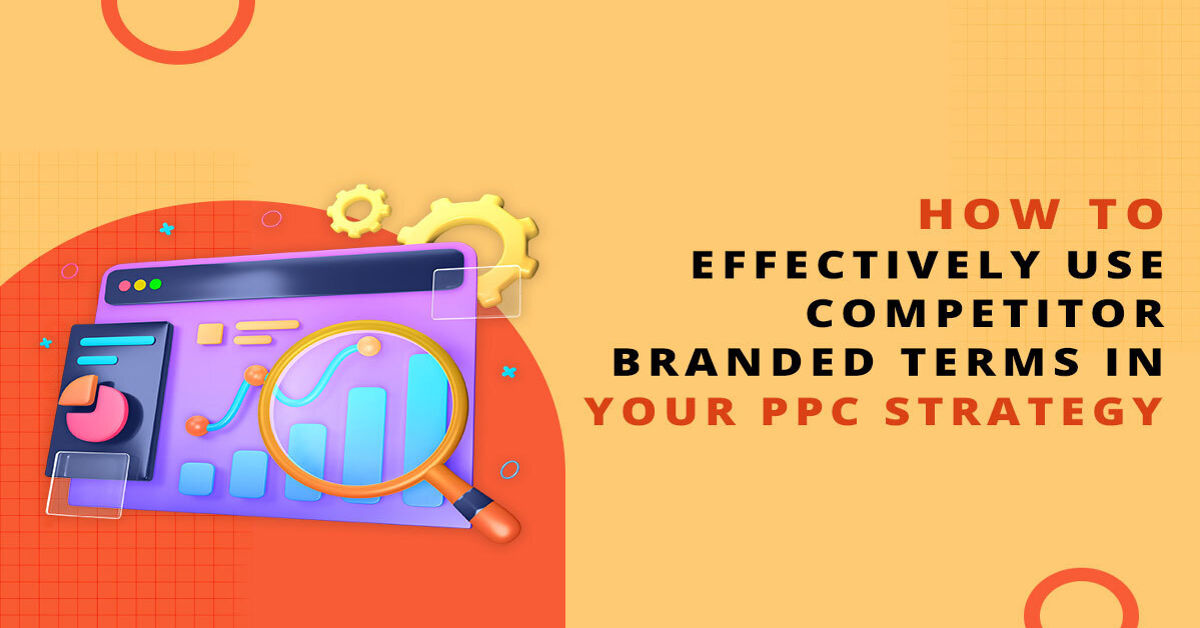In the world of Pay-Per-Click (PPC) advertising, bidding on competitor branded terms can be a powerful strategy to attract potential customers who are already interested in your competitors. However, using competitor terms effectively requires careful planning and execution to maximize your results without falling into ethical or legal pitfalls. This guide will explore how to effectively use competitor branded terms in your PPC strategy.
What Is Competitor Branded Terms?
Competitor branded terms refer to keywords that include the brand names or specific product names of your competitors. For example, if you run a digital marketing agency and bid on the term “ABC Marketing Agency,” you’re targeting users who search for that competitor’s name.
Benefits of Bidding on Competitor Branded Terms
1. Increase Visibility: By appearing in search results for your competitor’s brand name, you can increase your own visibility and potentially capture a share of their audience.
2. Capture User Interest: Users searching for a competitor’s brand may be interested in similar products or services, providing an opportunity to attract these users to your business.
3. Competitive Advantage: It allows you to showcase your unique selling propositions (USPs) against competitors and position your brand as a viable alternative.
How to Effectively Use Competitor Branded Terms
1. Conduct Thorough Research
Before bidding on competitor branded terms, research your competitors to understand their strengths, weaknesses, and market positioning. This will help you craft more effective ad copy and landing pages.
- Identify Key Competitors: List out who your main competitors are and which terms are relevant to your industry.
- Analyze Competitor Ads: Look at the types of ads your competitors are running for their branded terms. This can provide insights into their strategies and help you differentiate your ads.
Example: If you’re a software company, research what kind of messaging competitors like “TechSoft” or “Innova Systems” use. Note their unique selling points and find ways to highlight your own strengths.
2. Craft Compelling Ad Copy
When creating ad copy for competitor branded terms, focus on differentiating your brand from your competitors. Highlight your unique selling points and why users should choose your products or services over the competitor’s.
- Highlight Your Unique Selling Propositions (USPs): Emphasize what makes your product or service better. For instance, if your competitor’s software lacks customer support, your ad might say, “24/7 Customer Support – Try Us Today!”
- Include a Clear Call-to-Action (CTA): Encourage users to take immediate action, such as “Get a Free Trial,” “Learn More,” or “See How We Compare.”
Example: For an ad targeting a competitor’s branded term, you might write: “Tired of TechSoft’s High Prices? Switch to [Your Company] for Better Features and Lower Costs!”
3. Create Relevant Landing Pages
Ensure that the landing pages users are directed to are highly relevant to the ads and provide a smooth user experience. The landing page should address the user’s intent and offer clear information about why they should choose your brand.
- Match Ad Messaging: The content on your landing page should reflect the ad copy and continue the conversation. For example, if your ad mentions a special offer, the landing page should prominently display this offer.
- Provide Comparisons: Include comparison charts or detailed information that shows how your product or service stacks up against the competitor’s.
Example: If your ad highlights better pricing, your landing page could feature a comparison chart showing your lower prices versus the competitor’s.
4. Monitor and Adjust Your Campaigns
Regularly monitor the performance of your PPC campaigns using competitor branded terms. Look at key metrics such as click-through rates (CTR), conversion rates, and cost-per-click (CPC) to determine how well your ads are performing.
- Track Performance: Use Google Ads or other PPC platforms to track which competitor branded terms are generating the most clicks and conversions.
- Adjust Bids and Budget: Based on performance data, adjust your bids and budget to optimize your campaigns for the best results.
Example: If you notice that clicks on a particular competitor branded term result in high conversions, you may want to increase your bid for that term to capture more traffic.
5. Be Mindful of Legal and Ethical Considerations
Bidding on competitor branded terms can raise legal and ethical questions. Ensure that your ads do not infringe on trademarks or mislead users.
- Avoid Trademark Violations: Check if the competitor’s brand name is a registered trademark and ensure your ads don’t use trademarked terms in a way that could be considered misleading.
- Be Transparent: Your ads should clearly represent your own brand and avoid any misleading claims about your competitors.
Example: Instead of using the competitor’s exact brand name in your ad copy, you might use general terms like “leading marketing software” to avoid potential trademark issues.
Real-World Examples
1. Travel Industry
- Competitor Term: “XYZ Travel Agency”
- Ad Copy: “Looking for Better Deals? Explore [Your Agency] for Exclusive Offers and Personalized Service!”
- Landing Page: Features a comparison of your travel packages with those of XYZ Travel Agency and highlights your unique features.
2. E-Commerce
- Competitor Term: “ABC Online Store”
- Ad Copy: “Save More at [Your Store] – Better Prices and Free Shipping on All Orders!”
- Landing Page: Showcases special promotions, customer reviews, and a comparison of your pricing and shipping policies.
3. Software Solutions
- Competitor Term: “TechSoft CRM”
- Ad Copy: “Switch to [Your CRM] for Advanced Features and Superior Support – Free Trial Available!”
- Landing Page: Offers a detailed feature comparison and a free trial sign-up form.
Conclusion
Effectively using competitor branded terms in your PPC strategy can provide significant advantages by increasing your visibility and capturing potential customers who are already interested in your competitors. By conducting thorough research, crafting compelling ad copy, creating relevant landing pages, monitoring performance, and being mindful of legal and ethical considerations, you can make the most of this strategy and drive better results for your business.
Incorporating competitor branded terms into your PPC campaigns requires a balanced approach, but with careful execution, it can be a powerful tool to enhance your digital marketing efforts and gain a competitive edge.

